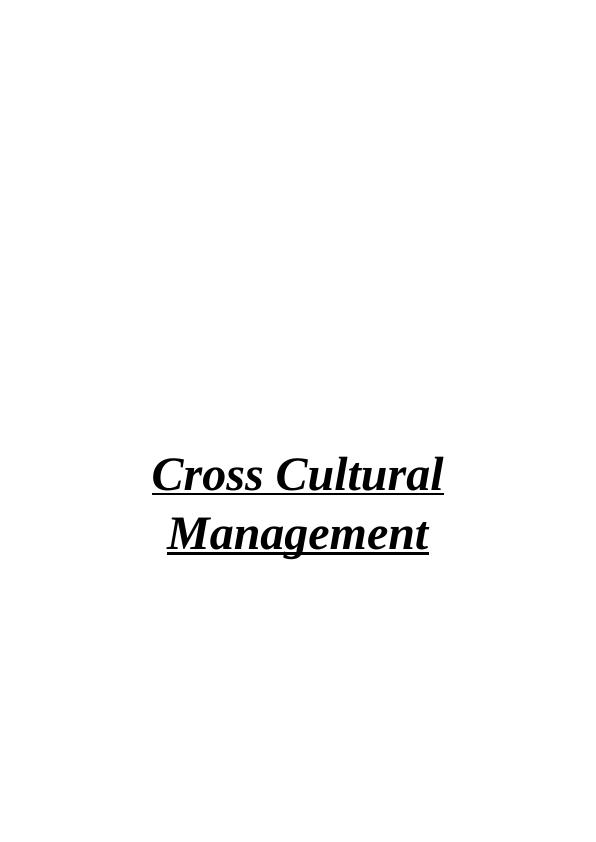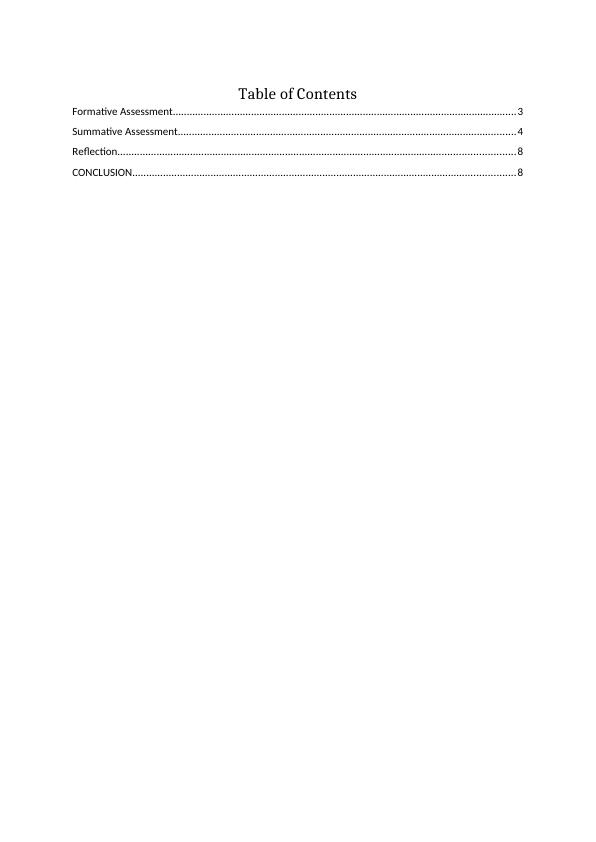Cross Cultural Management
Added on 2022-12-12
10 Pages3045 Words57 Views
Cross Cultural
Management
Management

Table of Contents
Formative Assessment...........................................................................................................................3
Summative Assessment.........................................................................................................................4
Reflection..............................................................................................................................................8
CONCLUSION.........................................................................................................................................8
Formative Assessment...........................................................................................................................3
Summative Assessment.........................................................................................................................4
Reflection..............................................................................................................................................8
CONCLUSION.........................................................................................................................................8

Formative Assessment
Cross-cultural management is a cross-cultural strategy study. This encompasses the analysis
of society's impact on administrators and administration, and the examination of different
cultures of particular managers and representatives of organisations. Cross-cultural
management lets an agency address individuals from various cultural contexts. Cross-cultural
administration lets us appreciate people from diverse backgrounds (Tjosvold, D., 2017). It's
critical because organisations are globally active today. It is crucial that individuals
communicate to other persons in the corporate community in order to reach a move beyond.
Cross-cultural management is an understanding of how cultural identity has an impact on
strategic processes, identifying differences and parallels in cultural cross-cultural experience
and different organisational contexts and increasing global management's performance.
The two problems in the case study is the cultural barriers and motivation. However,
Cultural distinctions are responsible for variations in actions and personalities such as facial
expressions, movements, ways of thinking, language, ways and standards. For example, in
some cultures facial expression is really common, while in others it is gross and insensitive.
On the other hand, both managers and field workers can have motivational problems in the
workplace. Issues that influence motivation vary from poor tools for achieving business
objectives to basic workplace recognition of employee performance. Motivational conditions
for the small businesses must be modified carefully to define and address the root causes of
the challenges impacting employees.
The topic covered in the class is organizational culture, leadership, motivation and human
resource management as it is covered in this report which helps them to know about various
theories and model of each topic in the class. The theories is used for the analysis is Handy’s
organisational culture, Maslow’s need hierarchy theory and leadership theories. As these will
help to the topic more effectively to learn (Långstedt, J., 2018).
The recommendation for this analysis is that there are various cultural prospects will
stimulate imagination and promote innovation. Awareness and experience in local markets
make a company more successful and profitable. Increased content and focused ads implies
cultural awareness, understanding and local information. Offer limited, regular incentives.
Rewarding workers for their work and effort is an almost obvious motivating rule. There are
many methods to achieve this, though, that are more powerful than others. Many workers
Cross-cultural management is a cross-cultural strategy study. This encompasses the analysis
of society's impact on administrators and administration, and the examination of different
cultures of particular managers and representatives of organisations. Cross-cultural
management lets an agency address individuals from various cultural contexts. Cross-cultural
administration lets us appreciate people from diverse backgrounds (Tjosvold, D., 2017). It's
critical because organisations are globally active today. It is crucial that individuals
communicate to other persons in the corporate community in order to reach a move beyond.
Cross-cultural management is an understanding of how cultural identity has an impact on
strategic processes, identifying differences and parallels in cultural cross-cultural experience
and different organisational contexts and increasing global management's performance.
The two problems in the case study is the cultural barriers and motivation. However,
Cultural distinctions are responsible for variations in actions and personalities such as facial
expressions, movements, ways of thinking, language, ways and standards. For example, in
some cultures facial expression is really common, while in others it is gross and insensitive.
On the other hand, both managers and field workers can have motivational problems in the
workplace. Issues that influence motivation vary from poor tools for achieving business
objectives to basic workplace recognition of employee performance. Motivational conditions
for the small businesses must be modified carefully to define and address the root causes of
the challenges impacting employees.
The topic covered in the class is organizational culture, leadership, motivation and human
resource management as it is covered in this report which helps them to know about various
theories and model of each topic in the class. The theories is used for the analysis is Handy’s
organisational culture, Maslow’s need hierarchy theory and leadership theories. As these will
help to the topic more effectively to learn (Långstedt, J., 2018).
The recommendation for this analysis is that there are various cultural prospects will
stimulate imagination and promote innovation. Awareness and experience in local markets
make a company more successful and profitable. Increased content and focused ads implies
cultural awareness, understanding and local information. Offer limited, regular incentives.
Rewarding workers for their work and effort is an almost obvious motivating rule. There are
many methods to achieve this, though, that are more powerful than others. Many workers

End of preview
Want to access all the pages? Upload your documents or become a member.
Related Documents
Motivation and Leadership | A Brief Studylg...
|7
|1267
|17
Cross Cultural Management: A Case Study of Brett Jones in Tanzanialg...
|9
|2941
|127
Gender Pay Gap: Issues and Theories on Gender Equalitylg...
|11
|771
|83
Managing People in Tesco - Reportlg...
|15
|4554
|2405
Cross Cultural Managementlg...
|11
|3567
|177
Impact of Cultural Factors on Leadershiplg...
|19
|1044
|482
